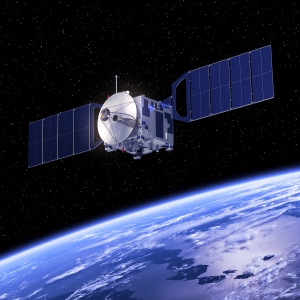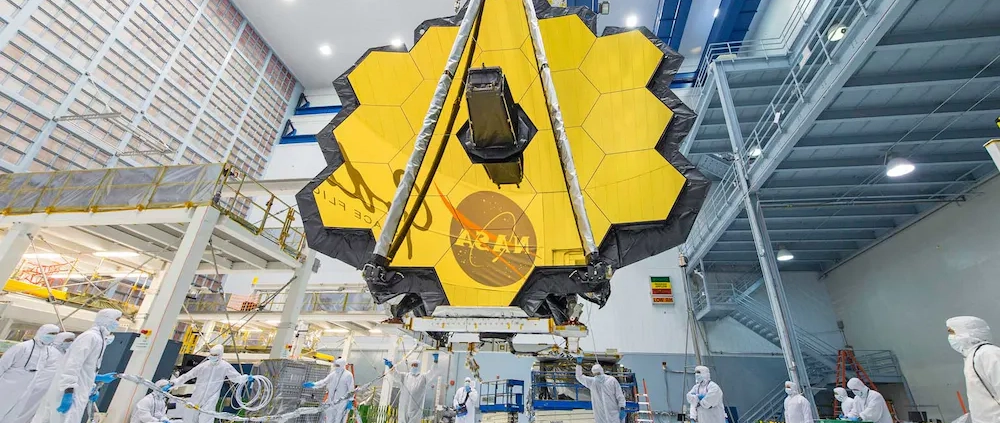Designing RF ASICs for Space: Understanding the Environmental Challenges of Satellite-Based Electronics
In the first installment of this two-part blog series on space-based ASICs, we delve into the intricate challenges of designing ASICs for the demanding environment of space. The stakes are high; launching and maintaining satellite equipment in orbit is a costly endeavor, so ensuring the effectiveness and reliability of integral components is paramount.
In this article, we’re focusing on the unique environmental challenges that ASICs used on satellites encounter beyond the Earth’s atmosphere. Unlike their terrestrial counterparts, these specialized circuits must withstand extreme conditions that go far beyond the usual demands of electronic components. From the intense radiation to the unforgiving vacuum of space, every aspect of their design demands meticulous attention to detail and precision. This is where the resilience and ingenuity of satellite ASICs truly shine, paving the way for space-based innovation and observation.

Satellite Orbiting Earth. 3D Scene. Elements of this image furnished by NASA.
The Unique Environment of Space for Satellite ASICs
The environment of space presents a range of challenges that are vastly different from those on Earth, posing unique hurdles for the design and functionality of RF ASICs on satellites. One of the most significant factors is the extreme temperature variations that space-bound equipment must endure. Unlike the more controlled terrestrial environments, satellite-mounted ASICs can be exposed to temperatures ranging from the intense cold of deep space to the searing heat when exposed to direct sunlight. This extreme range, which can fluctuate by as much as 150°C, demands robust design considerations to ensure the operational integrity and longevity of the ASICs in such fluctuating conditions.
Another critical aspect unique to space is the vacuum environment. This absence of atmosphere affects not only the thermal management of satellite ASICs but also impacts material selection and structural design. In space, the lack of air means that traditional cooling methods through air convection are ineffective, necessitating reliance on thermal radiation for heat dissipation. This shift requires a different approach to thermal management, with a focus on radiation and insulation techniques. Additionally, the vacuum of space can lead to outgassing from materials, potentially causing delamination or other forms of degradation. Ensuring that ASICs are designed with these factors in mind is crucial for their successful operation in the harsh and unforgiving environment of space.
Understanding Radiation and Its Impact on Satellite ASICs
A critical challenge in the design of an RF ASIC destined for space is the management and mitigation of radiation, a pervasive and potentially destructive force in the extraterrestrial environment. Space radiation primarily comprises high-energy particles, including protons and electrons from solar winds and cosmic rays from distant galaxies, which can have severe effects on electronic components. These particles, when interacting with the delicate structures of ASICs, can lead to various forms of damage, such as the buildup of charged particles in the gate oxides of transistors, altering their operational characteristics. In the realm of satellite ASICs, this can manifest as changes in threshold voltages in transistors, potentially leading to malfunction or failure of the circuit. The impact is more pronounced in smaller gate sizes, common in modern ASIC designs, where the probability of radiation-induced damage is significantly higher. Understanding these radiation effects is not only crucial for the initial design but also for the ongoing reliability and functionality of satellite ASICs operating in such a high-radiation environment. This understanding forms the basis for developing effective mitigation strategies to protect these sophisticated components from the harsh realities of space radiation.
Mitigation Techniques Part 1: Design and Material Considerations
When it comes to satellite ASICs, effective mitigation against the harsh radiation of space is achieved through a blend of innovative design and strategic material selection. For RF ASICs, which are integral in communication and signal processing in satellites, the choice of gate material and structure is pivotal. Materials that offer higher resistance to radiation help in reducing the vulnerability of these ASICs to radiation-induced damages, such as threshold voltage shifts, which are critical in maintaining signal integrity and performance. The physical design of the ASICs, including the layout and sizing of the gates, is also tailored with radiation resilience in mind. This is particularly important for RF ASICs, where precision and reliability in signal processing are paramount.
What’s more, the overall packaging of these ASICs plays a vital role in radiation protection. Utilizing radiation-hardened packaging materials and specialized insulation techniques provides an additional defense layer, crucial for shielding the sensitive electronic components from direct radiation exposure. This approach is especially relevant for RF ASICs, as it ensures the integrity and efficiency of communication systems, which are often the lifeline of satellite operations. These design and material considerations form the cornerstone of the development of robust satellite ASICs, ensuring their operational effectiveness and longevity in the challenging environment of space.
Stay tuned for our next blog, where we will delve deeper into advanced mitigation techniques and explore the crucial role of software strategies in safeguarding ASICs against the unpredictable nature of space.
*The opening image of the James Webb Space Telescope is credited to NASA/Desiree Stover.




